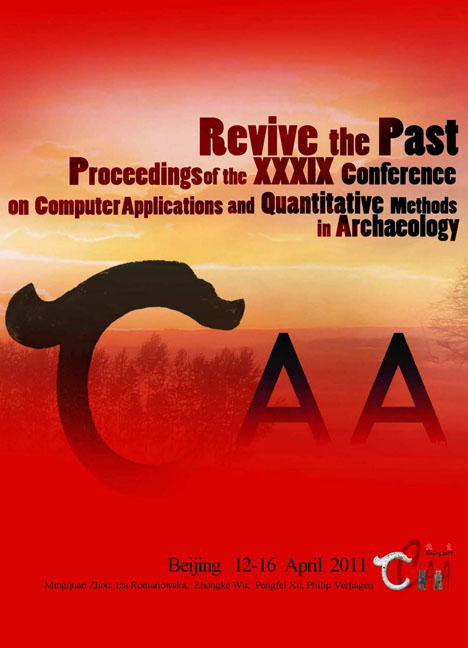 Revive the Past
Revive the Past A New Approach from 3D Modelling and Scanning of Archaeological Data to RealTime Online Exploration
Published online by Cambridge University Press: 23 June 2021
Summary
Abstract:
This paper will deal with a new approach for the reconstruction of archaeological urban contexts and its implementation on the web. Starting from archaeological information, geospatial and topographic data, we adopted a successful workflow from data generation to online real-time visualization and interactive content exploration. The process involves semi-automatic steps to provide a multidisciplinary team with a set of tools aimed at the final publication of massive landscape reconstructions and simulated environments. Optimized data and a well-structured 3D world have the primary goal of web accessibility and a fulfilling user experience through the exploration of such large datasets, especially in a context of virtual archaeology. Our main aim is to recreate entire ancient urban contexts and landscapes and make them accessible via the web. To achieve this goal, we successfully used a procedural approach, with the software CityEngine, for low poly modelling of a huge number of buildings. In fact, this method is specifically designed to create complex urban environments. It is based on L-systems to model cities which allow the user to completely control all entities in the hierarchy of the scene. In this way we can easily change the appearances and the typologies of the building by introducing some modifications in the scripts to easily simulate the distribution and randomness of the elements.
With real-time applications, dealing with large reconstructed cities and virtual landscapes is always a challenge. The rendering of large numbers of buildings, architectural elements and objects can be addressed with level-of-detail techniques, scene-graph algorithms and spatial partitioning of the virtual world. This allows a scalable approach in different scenarios with paging support for huge databases, locally or remotely located. The solid hierarchical structure generated from modules developed on top of an opensource OpenSceneGraph framework, allows for a clean and efficient load balance among the virtual world data. This has the effect of maintaining a light footprint on client system resources and 3D rendering applications, especially in dealing with the goal of web transfer minimization through a 3D-enabled browser.
We adopted this approach in a project of reconstruction and enhancement of archaeological sites of Montegrotto City entitled: “Il termalismo in età romana tra conoscenza e valorizzazione” coordinated by University of Padova. Initial data, method and software used, will be shown in the paper.
Key Words: Scanning, 3D Modelling, Web 3D, Virtual Museums
- Type
- Chapter
- Information
- Revive the PastProceedings of the 39th Conference of Computer Applications and Quantitative Methods in Archaeology, pp. 107 - 115Publisher: Amsterdam University PressPrint publication year: 2012


